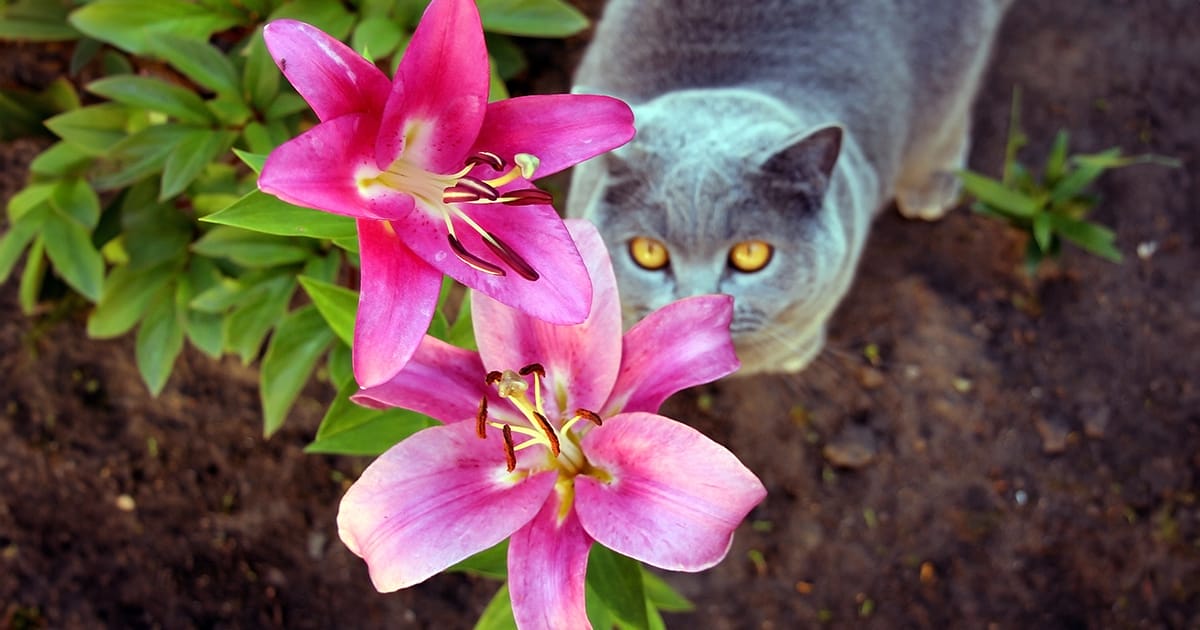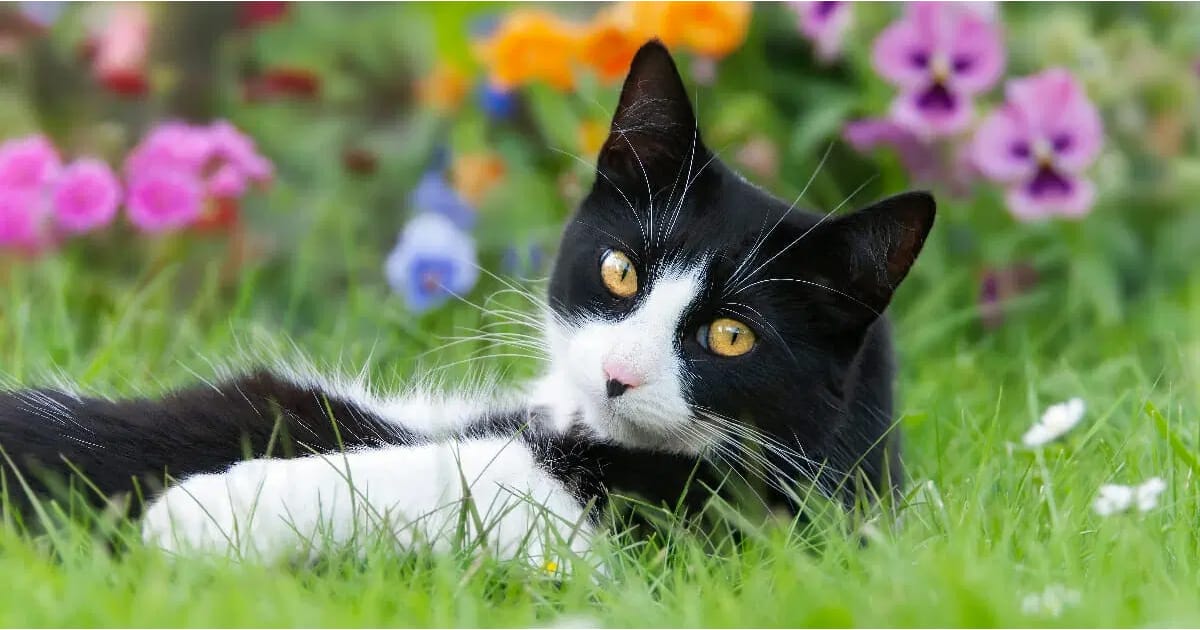Top Seven Easter Safety Tips for Pet Owners
Plastic eggs, lilies, and candy are just a few Easter hazards for pets. Learn more and how to keep your pet safe.
Springtime generally brings warmer weather, outdoor activities, and holidays like Easter. From egg hunts to Easter baskets filled with tasty treats and plastic grass, there are several potential hazards that can pose risks to your pets. Our MedVet experts share the top seven Easter safety tips to keep your pets healthy and safe during the holiday season.
1. Think Twice Before Giving Live Bunnies and Chicks as Gifts
While it might seem like a fun idea to give a live bunny or chick as an Easter gift, families may not be prepared for the responsibility of owning these animals. These pets have a very different anatomy than four-legged pets and may benefit from a veterinarian who specializes in avian and exotics. Because bunnies and chicks require a significant amount of care and attention, many end up being abandoned or surrendered to shelters, particularly after Easter. If you’re considering adding a new pet to your family, do your research and make a long-term commitment. Adopt from a reputable shelter or rescue organization, and ensure you have the time, resources, and space to provide a loving home.

2. Consider an Alternative to Plastic Easter Grass and Plastic Eggs
Plastic Easter grass is a popular decoration for Easter baskets, but it can be very dangerous for pets. If ingested, it can get stuck in your pet’s intestinal tract, leading to vomiting, diarrhea, and, in severe cases, intestinal blockages that often require surgery. To keep your pets safe, choose pet-friendly alternatives like paper grass, paper eggs, or natural hay. These materials are easier to digest and less likely to cause harm if accidentally swallowed.
3. Be Cautious with Easter Decorations, Including Lilies
Easter decorations, like ribbons, streamers, and small toys, can be very tempting for pets to play with. However, these items can pose serious risks if ingested, such as choking or intestinal blockages. To keep your pets safe, keep decorations out of their reach and supervise them closely during any holiday activities. If you have a particularly curious pet, consider using pet-safe decorations or placing them in areas that your pets cannot access.
In the spring, especially during Easter, it’s common to bring beautiful lilies into the home. However, if you have cats, it’s important to know that these plants are highly toxic to them. Even a small amount of ingestion, such as chewing on a leaf or drinking water from a vase containing lilies, can lead to severe lily poisoning and acute kidney failure within 12 to 24 hours. Without treatment, kidney failure can result in death within 24 to 72 hours. If you suspect your cat has ingested lilies, contact your family veterinarian immediately. If they are not available, take your cat to the .
To ensure your cat’s safety, it’s best to avoid having lilies in your home or garden. Instead, opt for cat-friendly plants and flowers that are non-toxic to felines. Some beautiful alternatives to lilies include orchids, roses, daisies, and sunflowers. By choosing these safer options, you can enjoy the beauty of flowers while keeping your cat safe.
To learn more about lily toxicity in cats, including the signs of lily poisoning, what to do if you suspect lily poisoning, and the treatment and prognosis for affected cats, read our in-depth blog post on lily poisoning in cats.

4. Keep Chocolate and Candy Away from Pets
If your holiday celebration includes candy or chocolate, be sure to hide baskets and treats in places your pet can’t reach, and keep an eye out for wrappers, which can cause an obstruction if ingested. Chocolate is extremely dangerous for pets because it contains theobromine and caffeine, both of which can overstimulate the central nervous system and heart. Dark chocolate and baking chocolate are particularly dangerous due to their higher theobromine content. Chocolate toxicity can lead to vomiting, diarrhea, tremors, heart failure, and seizures.
Additionally, some candies may contain xylitol, a sweetener used in gum, baked goods, peanut butter, and many products designed for people with diabetes due to its low glycemic index and low-calorie content. Xylitol can cause low blood sugar and liver failure in dogs, although xylitol toxicity has not been documented in cats.
If you suspect your dog has ingested chocolate or xylitol, call the Pet Poison Hotline at 855-764-7661 and your family veterinarian. They will be able to provide life-saving advice and treatment for your pet. If your family veterinarian is unavailable, take your pet to the nearest MedVet or emergency veterinary hospital.
5. Limit Human Food
If you’re cooking a holiday meal, it’s best not to share your plate with your pets. Human table food, such as fatty meats and poultry skin, can cause pancreatitis. Ham or turkey bones can splinter and become lodged in or puncture your pet’s digestive tract. Certain foods are toxic to pets, including bread dough, grapes, avocado, macadamia nuts, onions, garlic, and alcohol. Instead, provide them with their own pet-friendly treats.
Along with not sharing your plate, try not to leave your table unattended and/or keep food containers covered until it’s time to eat. It’s also a good idea to keep an eye on the garbage to ensure the can doesn’t overflow or get knocked over.

6. Be Mindful of Herbicides and Pesticides
An Easter tradition often includes outdoor egg hunts. If your pet is joining in on the fun, make sure they are not exposed to harmful herbicides and pesticides. While many fertilizers are generally safe for pets when spread in the yard, they can be toxic if ingested or if they come into contact with your pet’s skin. Store these products out of reach, such as in a cabinet or on a high shelf.
Additionally, some fertilizers contain ingredients that are more appealing to pets, making them more dangerous. These include blood meal, bone meal, and feather meal. Be sure to read the labels so you know what you’re spreading in your yard. Keep your pets away from treated areas until the products have dried completely and consider using pet-safe alternatives whenever possible. For more information on keeping your pet out of the ER, check out our spring pet safety tips blog post.
7. Stay Prepared for Emergencies
Despite your best efforts, accidents can happen. Always have the contact information for your family veterinarian and the nearest emergency veterinary clinic, like MedVet, readily available. Keep a pet first-aid kit on hand and familiarize yourself with basic first-aid procedures. If you suspect your pet has ingested something toxic or is showing signs of distress, seek veterinary care immediately.
Easter is a wonderful time to celebrate with family and friends, but it’s important to prioritize the safety and wellbeing of your pets. By following these Easter safety tips, your pets can enjoy the festivities right alongside you.
Visit our Pet Care Resources library for more pet health and safety information.
FAQs
Learn More
For ways to ensure your pet lives a happier, healthier life, visit our Pet Care Resources library.
Pet Care ResourcesContents
Learn More
For ways to ensure your pet lives a happier, healthier life, visit our Pet Care Resources library.
Pet Care Resources

